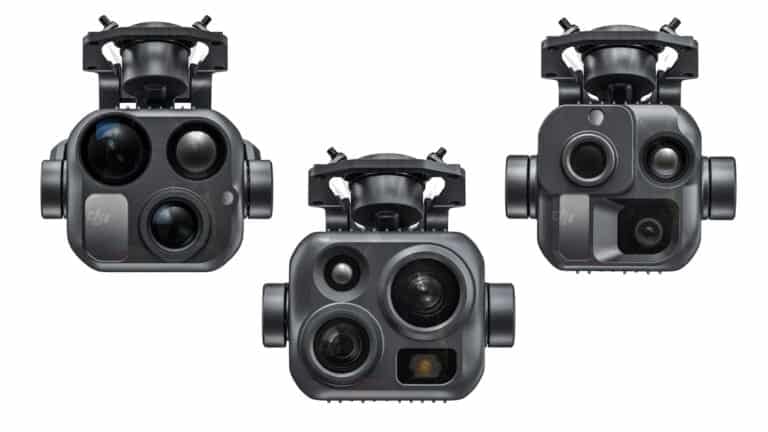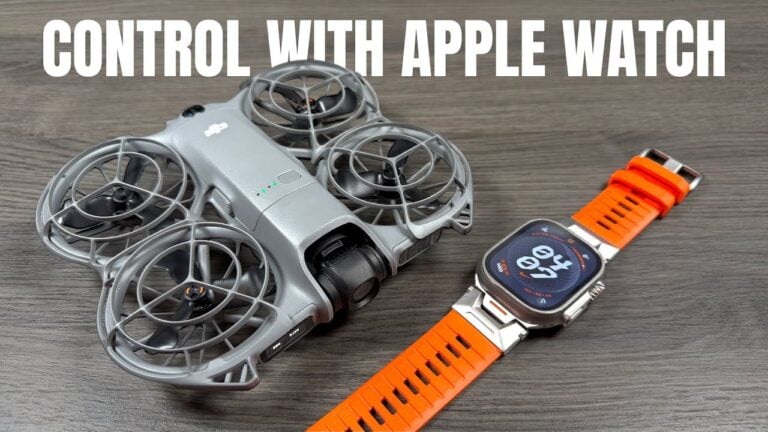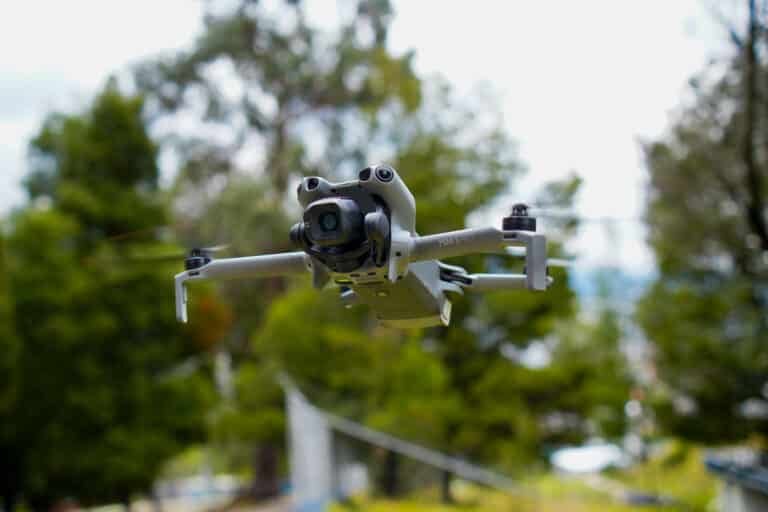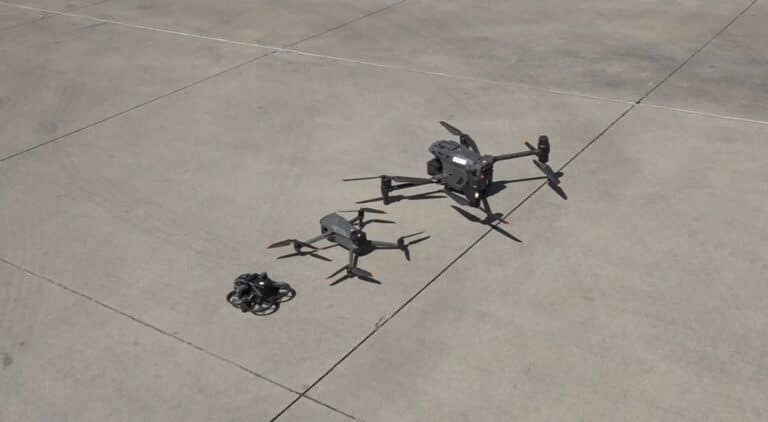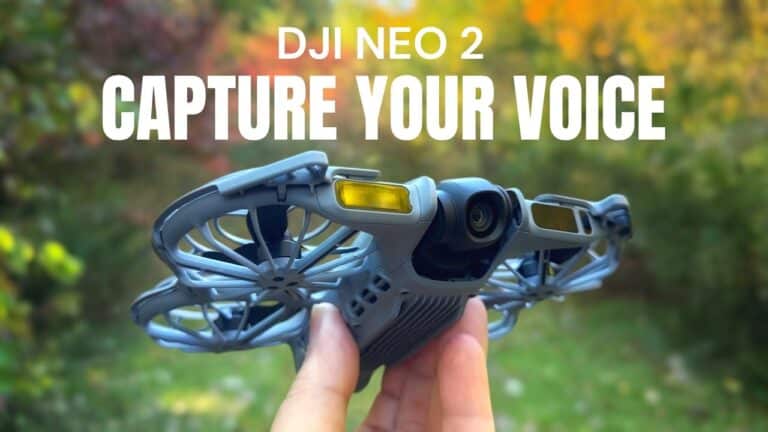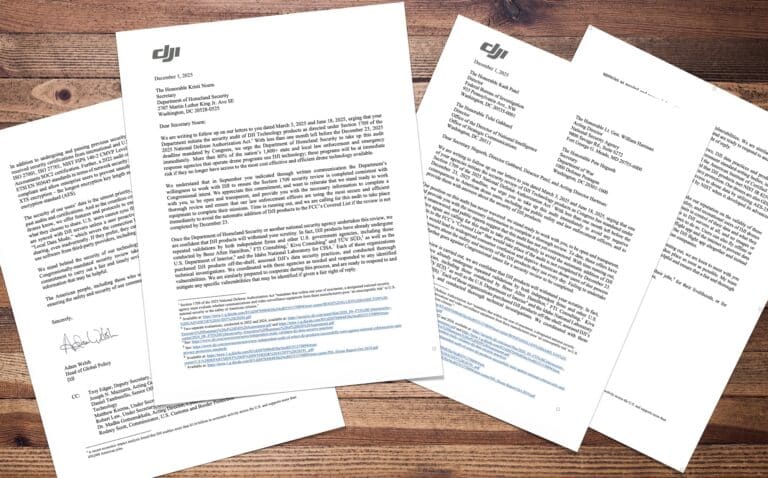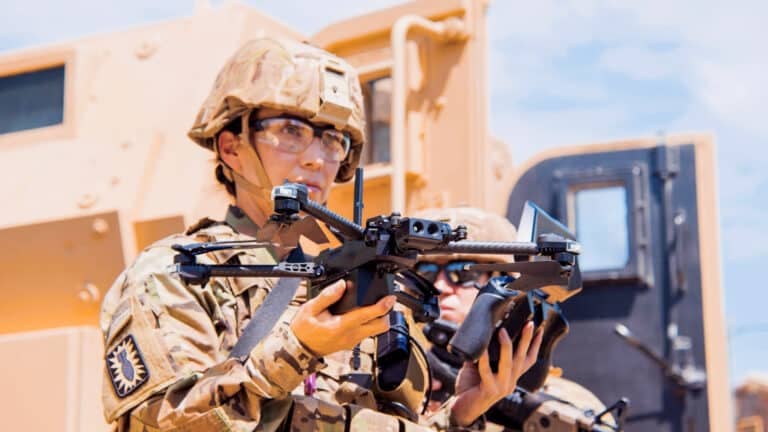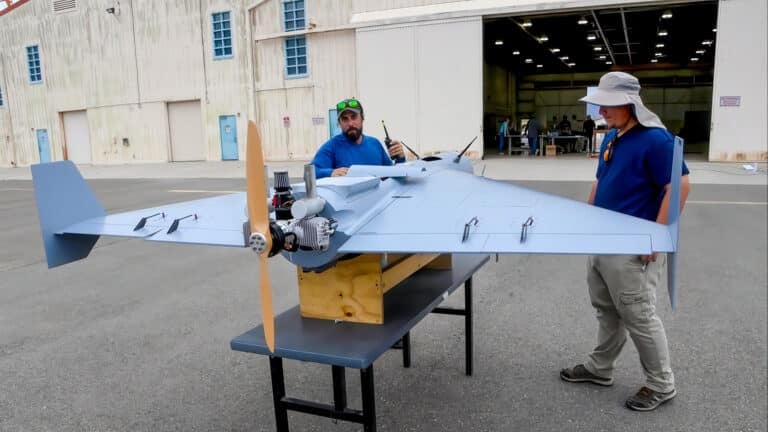Drone at 75 Feet Near San Diego Airport Runway Sparks Confusion: Police or Unauthorized?
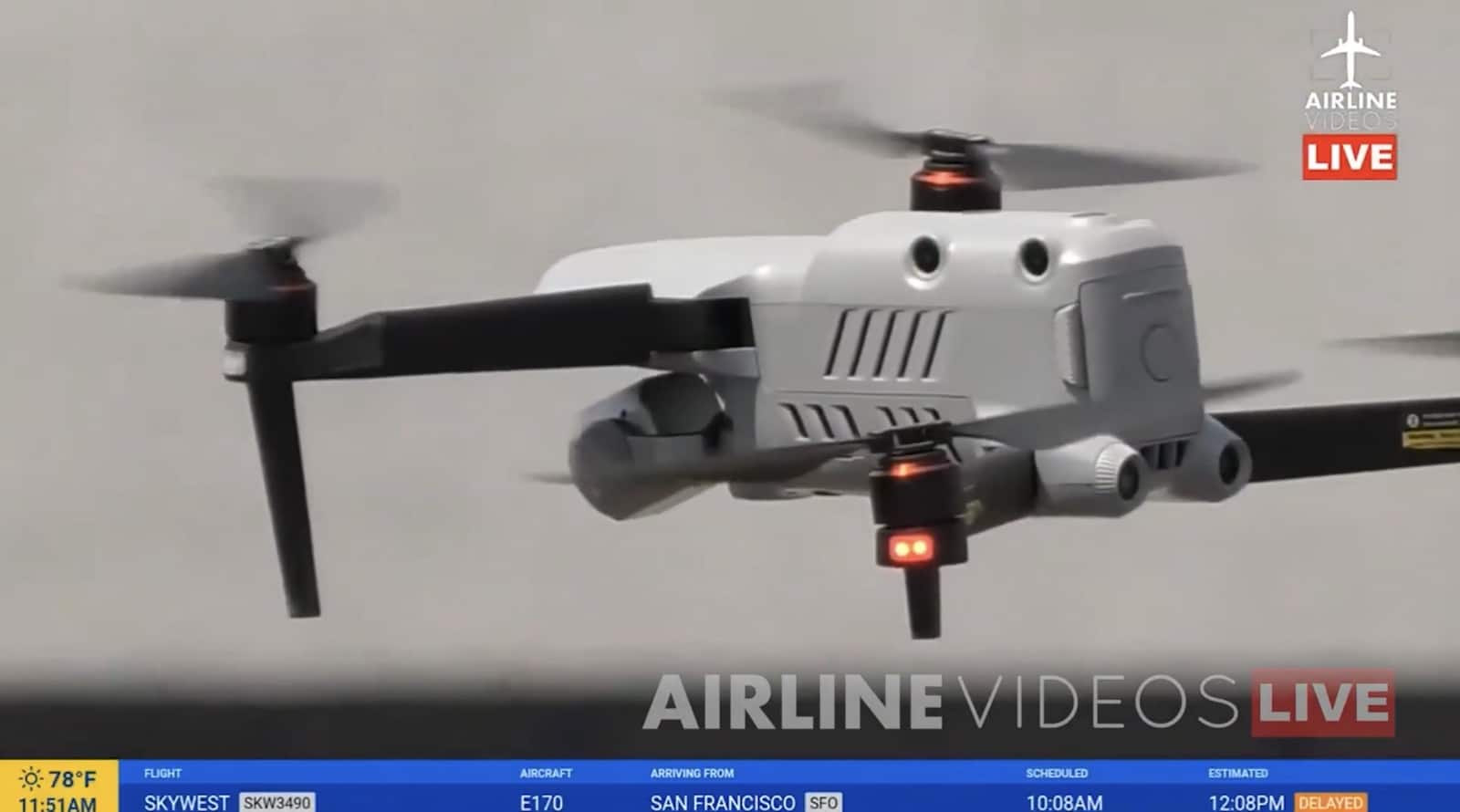
Amazon Drone Deals: DJI Mini 5 Pro Fly More Combo with DJI RC2 now for $1,099!
A drone hovering at just 75 feet near San Diego International Airport’s active runway created a dangerous close call with incoming passenger aircraft in late August, with air traffic control recordings revealing confusion about whether the aircraft was authorized police equipment or an illegal operation. The drone incident highlights growing coordination gaps as police drone programs expand nationwide.
The Autel Robotics EVO 2 enterprise drone was caught on video by plane-spotting YouTube channel Airline Videos during a live broadcast on Tuesday, August 27, 2025. Host Kevin spotted the drone flying dangerously close to the runway approach path and immediately alerted authorities.
News Reporter Captures Dangerous Close Call
“Oh my gosh, there’s a drone!” Kevin said during the live stream. “No, get that drone out of here! What is going on here? That drone should not be in the way of these aircraft.”
The footage shows the drone hovering in place before suddenly climbing even higher, nearly entering the flight path for incoming aircraft. Moments later, a Southwest Airlines passenger jet passed just a few hundred feet above the hovering drone as it prepared to land.
“Whoever has that drone, you might be going to jail!” Kevin exclaimed. “I mean, literally, it’s right in front of us. Look at this thing! That’s how close it is to my camera — right below the flight path of SAN.”

ATC Audio Reveals Critical Confusion
Air traffic control recordings captured by VASAviation, a YouTube channel run by corporate pilot and certified flight instructor Victor Atienza Sanchez, reveal that controllers initially referred to the aircraft as a “police drone” before later calling it an “unauthorized drone.” The shifting terminology exposed dangerous uncertainty about whether the operation was legitimate law enforcement activity or an illegal flight.
ATC informed inbound pilots that a drone was operating at 75 feet (23 meters) near the runway approach. The confusion about the drone’s status raises critical questions: Was this a police operation conducted without proper coordination with air traffic control, or was it an unauthorized flight that ATC mistakenly assumed was police equipment?
Remote ID and Registration Violations Apparent
The Autel EVO 2 visible in the footage is an older model drone and still has the instructional stickers attached its arms. This detail is significant because older Autel EVO 2 models (V1 and V2) do not have built-in Remote ID and require an external broadcast module to comply with FAA regulations that have been fully enforced since March 2024.
No external Remote ID module is visible on the drone in the video footage, suggesting a clear violation of federal law. Additionally, no FAA registration number can be seen on the aircraft, though the video quality and angles don’t provide a perfect view of all sides of the drone.
The Autel EVO 2 weighs over 250 grams (0.55 pounds) and requires FAA registration, whether flown recreationally or commercially. All registered drones must display their registration number on the outside of the aircraft and broadcast Remote ID information during flight.
Note: Autel drones do not have geo-fencing which could have prevented it from flying near an airport.
San Diego Emerges as Drone Incursion Hotspot
San Diego has emerged as a troubling hotspot for unauthorized drone activity in 2025. FAA data shows drone incursions near U.S. airports surged 25.6% in the first quarter of 2025, with 411 incidents reported compared to 327 during the same period in 2024.
San Diego International Airport, which was absent from the top five problem airports in 2024, saw a significant jump in unauthorized drone activity in 2025. The airport sits in Class B controlled airspace where drone operations absolutely require FAA authorization through the LAANC system—authorization that would certainly be denied for flights at 75 feet near an active runway.
Counter-drone technology firm SkySafe identified 34 unauthorized drone flights within controlled airspace near San Diego International Airport during a single month in spring 2024, with one drone repeatedly climbing to 8,871 feet (2,704 meters)—far above legal limits and directly intersecting commercial flight paths.
Police Drone Programs Create Coordination Challenges
The confusion revealed in the ATC audio highlights a growing problem as police drone programs expand rapidly across the United States. The FAA granted 214 Drone as First Responder program approvals in 2025, with law enforcement agencies deploying drones from automated docking stations that can reach emergency scenes in under 60 seconds.
However, this rapid expansion has created coordination gaps between police operations and air traffic control systems. When ATC can’t immediately determine whether a drone near active runways is authorized law enforcement equipment or a rogue operator, it creates dangerous uncertainty during critical moments.
The Autel EVO 2 enterprise model visible in the footage is commonly used by law enforcement and commercial operators. If this was a legitimate police operation, the lack of coordination with ATC represents a serious failure in operational protocols. If it was unauthorized, the fact that ATC initially assumed it was police equipment suggests dangerous confusion in the system.
Industry Warns of Catastrophic Event
DroneUp CEO Tom Walker has warned that without improved coordination, “we are going to have a catastrophic event.” His warning followed a drone collision with a rescue helicopter during Texas flood operations that forced the crew to land and halted life-saving efforts.
“In the chaos of unspeakable tragedy, a single uncoordinated drone put lives at risk and halted the very efforts meant to save them,” Walker wrote in a Fox News opinion piece.
The San Diego incident exemplifies Walker’s concerns. Whether the drone was police or unauthorized, the ATC confusion demonstrates how the system breaks down when proper coordination doesn’t occur.
Federal Response and Investigation
Airline Videos reported that authorities were notified immediately, ATC warned inbound pilots, and local police responded to investigate. However, it remains unclear whether the operator has been identified or charged with any violations.
The incident occurred in San Diego’s heavily restricted airspace, home to the U.S. Pacific Fleet’s principal homeport and multiple major military installations including Naval Base San Diego and Marine Corps Air Station Miramar. The concentration of military and commercial aviation in the area makes unauthorized drone operations particularly dangerous.
Flying a drone in this location without authorization could result in civil penalties exceeding $30,000. The FAA proposed $341,413 in civil penalties against 27 drone operators in 2024 for various violations, with individual fines reaching $32,700 for interfering with law enforcement operations.
DroneXL’s Take
This incident is exactly what experts have been warning about. Drone incursions near airports have surged 26% this year, and San Diego has emerged as a new hotspot for exactly this type of dangerous operation. But what makes this case particularly alarming isn’t just the reckless flight—it’s the confusion it exposed.
When air traffic controllers can’t immediately determine whether a drone hovering at 75 feet near an active runway is legitimate police equipment or an illegal operation, we have a fundamental coordination problem. And that problem will only get worse as police drone programs continue their explosive growth. The FAA has approved over 200 Drone as First Responder programs this year, with departments launching drones from rooftops in Las Vegas, automated docking stations in Sparks, and rapid-response systems across the country.
These programs save lives. We’ve covered dozens of stories where police drones helped locate missing children, track suspects, and coordinate emergency responses. But if police drones are flying near airports without proper coordination with ATC, or if ATC assumes any enterprise-grade drone near a runway must be police equipment, we’re creating new dangers while solving old problems.
The Remote ID violations are another red flag. This appears to be an older Autel EVO 2 without built-in Remote ID, and no external module is visible. That’s not just a regulatory violation—it’s a deliberate choice to operate invisibly in one of the most sensitive airspaces in the country. Whether this was police or unauthorized doesn’t change the fact that Remote ID compliance should be non-negotiable near airports.
The broader context is even more troubling. SkySafe detected 34 unauthorized flights near San Diego’s airports in a single month last year, with one drone repeatedly climbing to nearly 9,000 feet. That’s not ignorance—that’s systematic violation. And with DJI eliminating geofencing in January 2025, the responsibility for compliance has shifted entirely to operators. Some will respect that responsibility. Others, clearly, will not.
DroneUp’s CEO warned we’re headed for a catastrophic event. Looking at this footage—a drone hovering 75 feet below landing aircraft while ATC scrambles to figure out who’s flying it—it’s hard to argue he’s wrong.
What do you think? Share your thoughts in the comments below.
Discover more from DroneXL.co
Subscribe to get the latest posts sent to your email.
Check out our Classic Line of T-Shirts, Polos, Hoodies and more in our new store today!

MAKE YOUR VOICE HEARD
Proposed legislation threatens your ability to use drones for fun, work, and safety. The Drone Advocacy Alliance is fighting to ensure your voice is heard in these critical policy discussions.Join us and tell your elected officials to protect your right to fly.
Get your Part 107 Certificate
Pass the Part 107 test and take to the skies with the Pilot Institute. We have helped thousands of people become airplane and commercial drone pilots. Our courses are designed by industry experts to help you pass FAA tests and achieve your dreams.

Copyright © DroneXL.co 2025. All rights reserved. The content, images, and intellectual property on this website are protected by copyright law. Reproduction or distribution of any material without prior written permission from DroneXL.co is strictly prohibited. For permissions and inquiries, please contact us first. DroneXL.co is a proud partner of the Drone Advocacy Alliance. Be sure to check out DroneXL's sister site, EVXL.co, for all the latest news on electric vehicles.
FTC: DroneXL.co is an Amazon Associate and uses affiliate links that can generate income from qualifying purchases. We do not sell, share, rent out, or spam your email.





